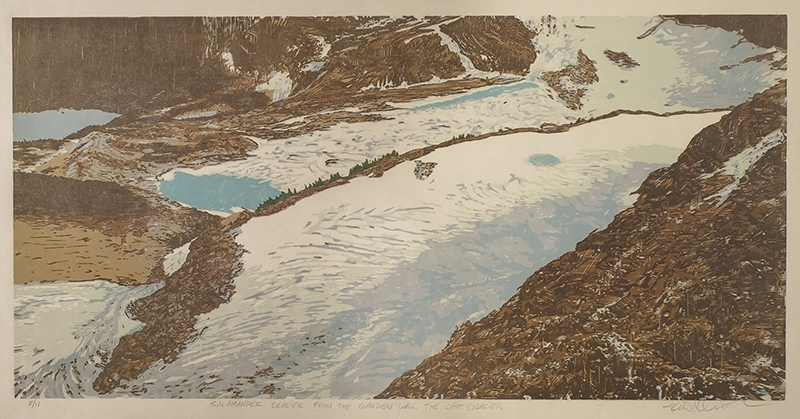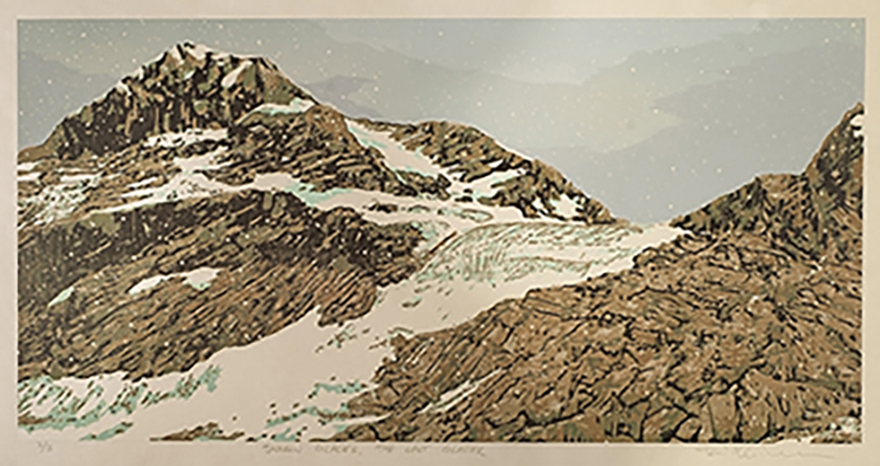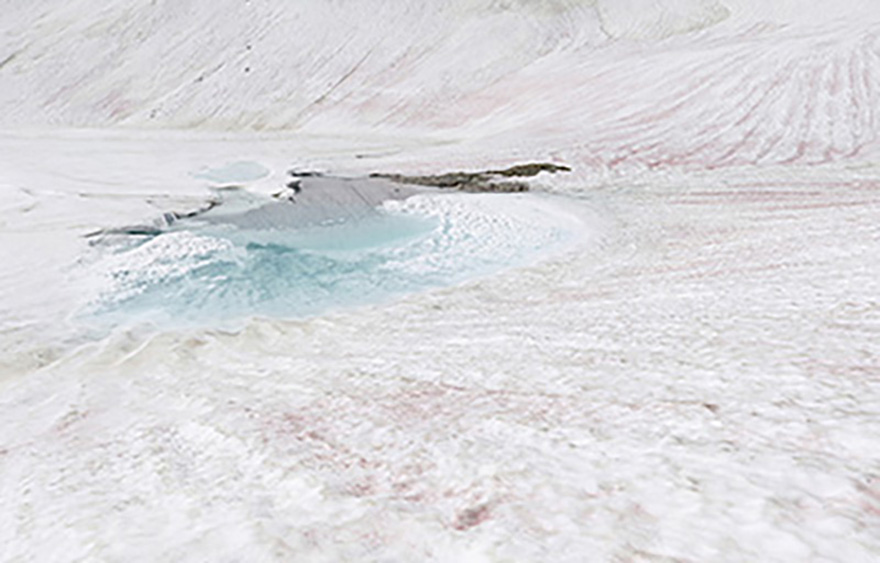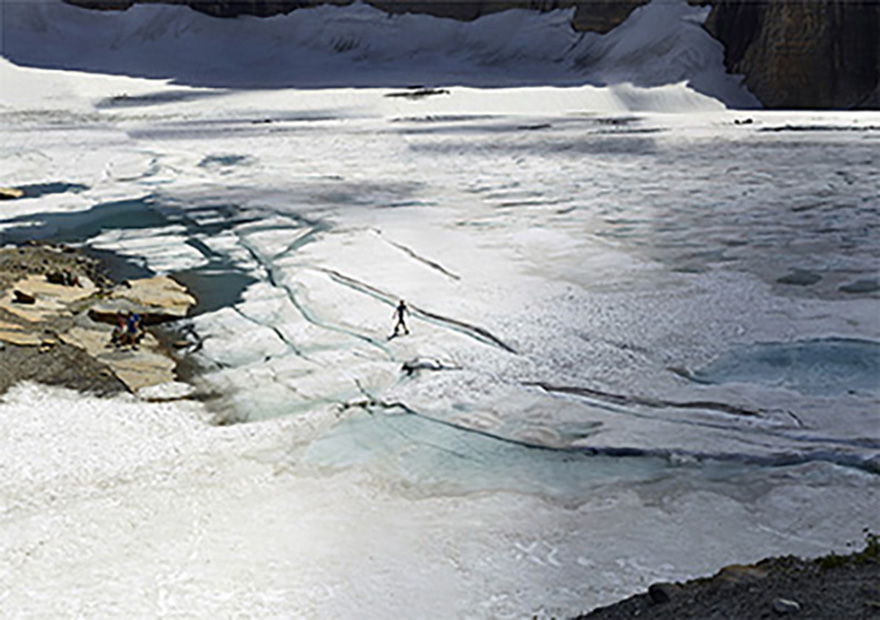It’s no secret that the world’s melting glaciers are contributing to rising global sea levels and warming oceans. But this massive glacial melt is also creating radical changes in surrounding landscapes, altering the composition of soil and plant life in ways that can lead to the collapse of entire habitats. As the glaciers disappear, our world is dramatically altered.
The Last Glacier project is a collaboration between three artists of international renown—printmakers Bruce Crownover and Todd Anderson and photographer Ian van Coller—who are dedicated to capturing the fading majesty of Earth’s remaining glaciers. The three artists began their collaboration in 2010 as a way to respond to the rapidly retreating glaciers of Glacier National Park in Montana, where in 1850 there were 150 glaciers. Today the park holds only 25, and these are predicted to disappear by the end of the century.
Since 2010, the trio of artists have expanded their work to creatively document the impact of our steadily warming planet on glaciers through larger collaborations with scientists at glacial landscapes in Colorado and Alberta, Canada, as well as Iceland, Tanzania, and beyond.
Their process begins with observation and collection. The three spend a few weeks each summer hiking deep into the backcountry of a glacier to sketch, paint, and make photographs. Upon their return, the artists retreat to their respective studios to refine their images and translate them into large-scale woodcuts and digital prints. The drama, brilliant color, and sheer beauty of the finished work offer a stark reminder of what we are losing to the rapid, sweeping changes in Earth’s climate system.
The resulting images have an intense emotional charge that reflects the artists’ passion and commitment. Appropriately monumental in scale, they capture both grandeur and pathos, beauty and loss. In the words of essayist Nancy Mahoney, Todd Anderson and Bruce Crownover’s reductive woodcuts “are layered landscapes that go beyond realistic representations. Their prints portray a larger truth about the glacial texture, mass, subtle colorations, and antiquity, which cannot be captured in scientific prose.” In contrast, van Coller’s subtle, richly detailed photographs bring into sharp focus the texture and grandeur of these disappearing landscapes.
By engaging directly with climatologists and glaciologists, the artists ensure that their artwork and ancillary materials are grounded in accurate, up-to-date scientific information. They also work closely with writers and curators, sharing their work through exhibitions, limited-edition books, public talks, and a series of interconnected websites.
“We’re trying to bridge gaps and connect with as many folks [about this issue] as we can,” Anderson says.
















